<---Previous =============== Next--->
Chassis - Frame and Suspension
The design of the frame was based on a similar frame
design I did for my brother's Cord. Finite Element Analysis was
performed to ensure it had sufficient strength and rigidity. Of
particular interest for a convertible is torsional rigidity. A poorly
designed convertible will have noticeable cowl shake when traveling over
irregular surfaces - like rail road tracks crossing the street at a diagonal.
To obtain the desired stiffness, the frame uses high polar moments of
inertia, thin walled rectangular tubing. The largest members are
below the door and are 3X6 inch tubes with 0.10 inch walls.
Roll protection is provided by a forward cowl support
(supports the windshied and dash) and rear cowl support (protects the
gas tanks). Accommodations for an optional roll bar have also been
made.
Most kit cars have fiberglass doors that provide minimal
side intrusion protection. The Otis Cord uses modified doors from
a 1972 MGB. These metal doors have the side protection required
in modern automobiles. To accommodate the lines of the Cord, the
MGB exterior doors skins were removed and replaced with fiberglass.
Front suspension is 1973 Pinto with Granada disks.
Location of the upper "A" frame member pivots was determined
by computer modeling that minimized tire scrub and optimized wheel camber
for optimal cornering traction. Cornering is also improved with
the addition of a 7/8 inch diameter anti-sway bar attached to the front
suspension. The rear suspension is 1972 Corvette. This combination
provides 4 wheel independent suspension and four wheel disk brakes - choice
for maintaining control in high performance cars.
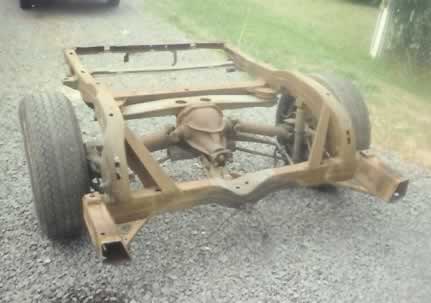
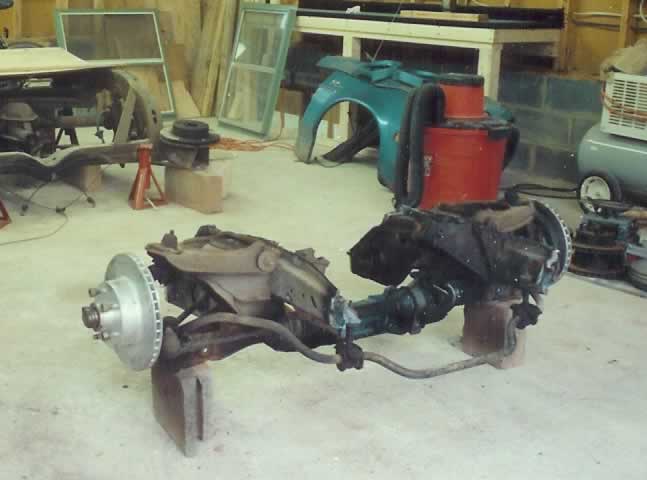
1973 Pinto front suspension with Granada disks. (Sept 1985)
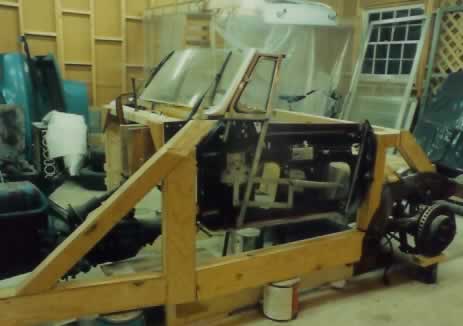
Frame is extensively mocked up with wood to verify design. (April 1986)
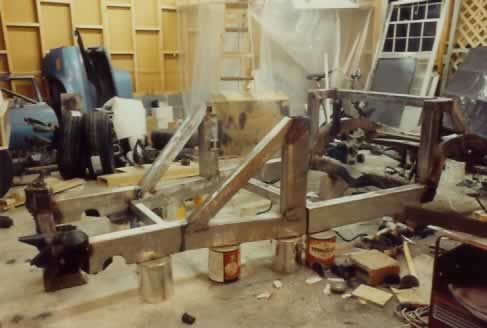
Frame construction begins. (May 1986)
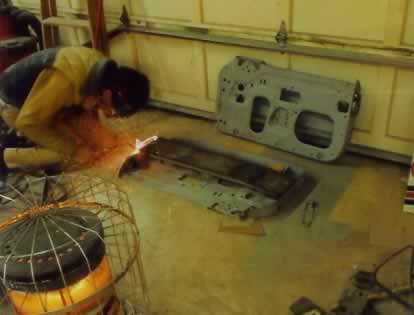
Reinforced side protection welded into 1972 MGB door. (Oct 1986)
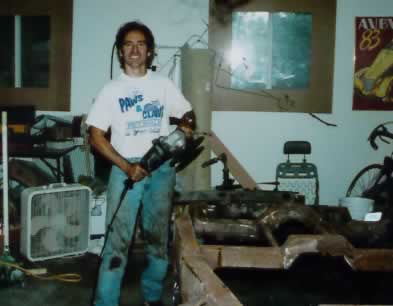
Photo of me preparing to clean up frame welds. (July 2005)
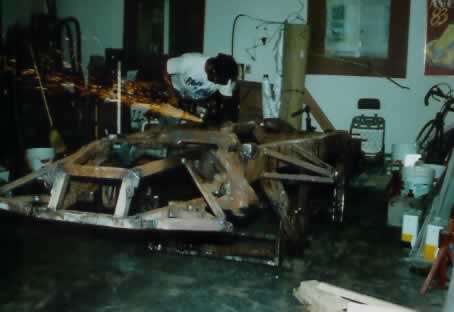
Back to the grind. (July 2005)
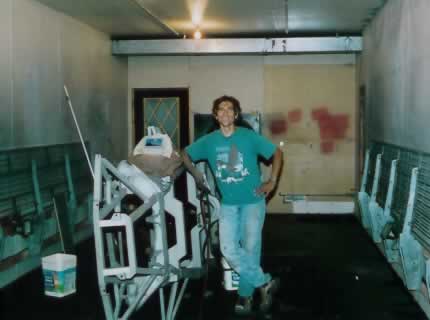
Frame in paint booth after "professional sandblasting". The professionals did a poor job.
Spent 8 hours completing the job myself - in the paint boot of all places! (July 2005)
<---Previous =============== Next--->
Hosted by MagicWeb.us